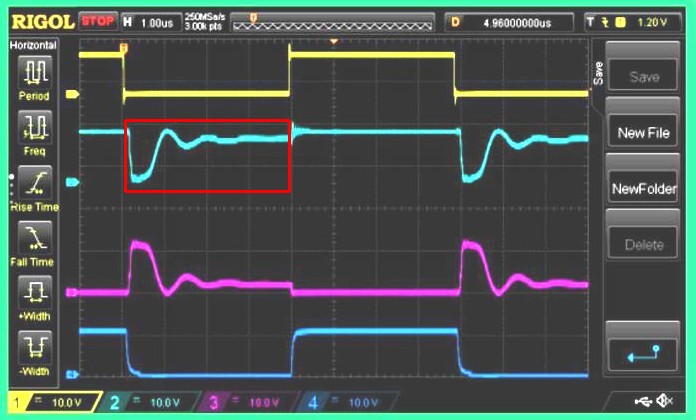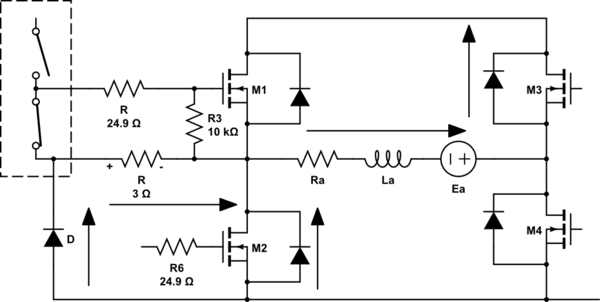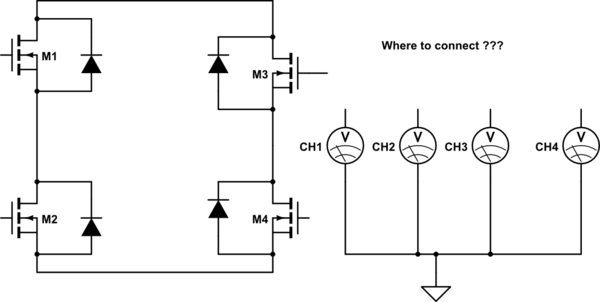I am developing an H-bridge for use with 48VDC brushed motors. The bridge is implemented with discrete DPAK N-channel MOSFET transistors driven by an HIP4081AIBZ. I have not yet fitted RC snubbers across the FETs (although my board has pads for them, I just need to characterize the board to calculate part sizes), nor have I added any bypass capacitors across the motor (C8-C10 in the attached schematic).
Presently I am only driving one half of the bridge with PWM, Q2 & Q3. That means that during the PWM "on" period, the motor receives power and during the "off" period it coasts. I have provisions in the controller for this bridge to drive it in complimentary mode. That is, Q2 & Q3 on together in the "on" portion of the PWM signal, then Q1 & Q4 on together in the "off" portion of the PWM signal. Again, for now I am just PWMing Q2 & Q3 and leaving Q1 & Q4 off.
However, I am experiencing an interesting problem. As motor speed increases, Vgs on the high-side FETs drops, presumably due to motor regeneration during deceleration in the "off" portion of the PWM signal. Eventually Vgs drops enough that Q3 won't even turn on any more and the bridge starts "hiccuping". Obviously this is not good.
I think the problem will go away once I drive the bridge in complimentary mode, as the FETS that are on in minority portion of the PWM cycle will provide a path for motor regeneration, clearing the way for the next majority portion of the cycle.
However, before I start blowing FETs I would like to get some input from others.
The attached image shows the circuit I am using, as well as several scope traces for various PWM duty cycles at two different PWM frequencies (32kHz & 128kHz). The Vgs problem appears at a lower duty cycle in the 32kHz setup, presumably because the motor is able to accelerate more in the longer on-times with the lower PWM frequency. The test setup and all of the traces are explained in the attached image (note that DISABLE is grounded during trials to enable the H-bridge driver).
Edit: Vmot_ret & ground are tied, even though this is not shown in the schematic.




